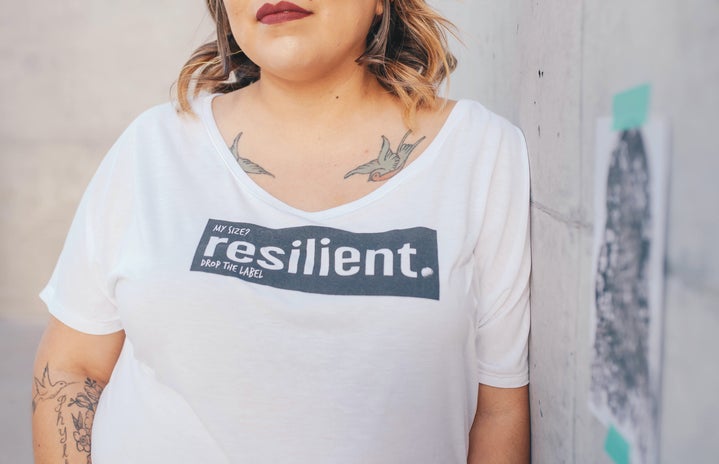Feminism was one of Webster’s words of 2017 and has definitely tightened its grip on American culture in recent years. You would be hard-pressed to find someone who hasn’t formed some sort of opinion about it, and many more people practice feminist theory without even realizing it. If you’ve taken some time to familiarize yourself with the ideas and goals behind feminism (and if you haven’t, start here ) you’ve probably heard of something called “waves”.
Having been in the Gender Studies Department for some time now, I have heard this analogy explained more times than I care to count and each time I fight the urge to spring up and shriek “NO MORE PLEASE SWEET JESUS”. But in order to properly explain why wave terminology is no longer needed, I guess I’ll have to explain what it is first. So if you’ve never heard about the waves of feminism, I will offer a brief (and very basic) summary, and if you have–bare with me for a few more sentences.
Making Waves
Scholars, academics, and feminists use the term “waves” to talk about the history of feminism and its development as a movement. There are generally three separate waves that represent a chunk of time where feminism was at a climax, influencing politics and society in ways that challenged the status quo. The first wave is considered the foundation of feminist concepts and begins in the 19th century. Agenda for these feminists included abolishing slavery, gaining the right to vote and expanding women’s roles in the public sphere. The second wave begins after the second World War when women’s participation in the public arena broadened under wartime labor shortages. Feminists during these years fought for equality in the workplace and within the family, as well as respect and agency in reproductive and sexual rights. The Equal Rights Act was one big hurdle for feminism in this period, a piece of legislation guaranteeing women equal rights before the law that has yet to be passed (Thanks a lot, Utah).
The last wave began in the 90’s and continues into present day. Having made headway towards equality in terms of policy and legislation, feminists in this period fought for balance in the contexts of everyday life. Institutionalized sexism is fueled in part by attitudes that have been ingrained in society through practice. Essentially, feminists worked to change attitudes from the bottom up, sometimes doing so in rebellious and disruptive ways. Think of this wave as the “FUCK THE PATRIARCHY” stage where riot grrls reigned supreme and bras were burned on every corner (kidding…. sort of). Feminists in this period also pushed to become more globally inclusive and aware of the diverse conditions faced by women around the world, moving away from the notion that women experience the same oppression universally. After this wave, you couldn’t hear the word “feminism” without “intersectionality”. Each wave is characterized by its own contributions to society and feminist theory as a whole — contributions that are built off of and pulled from those of the wave that came before it.
The Wave Effect
The wave lingo is most commonly used when referring to history — it’s easier to picture a timeline sectioned off into three pieces making up the lifetime of feminism. Except that you can’t. Change isn’t linear and it certainly doesn’t grow in perfect succession. The ideas and concepts that were formed in each of span of years were borrowed from other movements. From other activist groups and organizations, feminism was able to grow and change to become the most inclusive and effective possible (although I’m not saying that has been 100% achieved).
However harmless it may seem to compartmentalize feminism into neat little boxes, separating its accomplishments (and defeats) has seemed to separate its members. Instead of seen as collaboration, each new wave is quick to criticize the doings of its predecessors. Claiming their newfound progressive attitudes are far superior and effective than those that came before, members of each wave fought to distinguish themselves by pushing women from previous waves away.
Now I’m not downplaying the power of criticism, and talking about feminism in waves is certainly a good analytical tool in trying to understand it’s weak points. But too often are “waves” used as a tool for modern feminists to take the high ground. And yes, I get it. First and second wave feminist were perpetuating White Feminism and did not practice the allyship we value so greatly today, but that’s not to say that the same exclusive feminism doesn’t still occur (such as Trans Exclusionary Radical Feminism or TERF’s).
Additionally, separating the movement into pieces makes it seem like each wave is a completely separate entity, like the things first wave feminists fought for are a thing of the past with no relation to the experience of women today. Isolating the movement into historical periods implies that the flaws of first and second “wave” feminism have been acknowledged and corrected, when in reality they are still very much in practice.
Post Waves
I am not going to offer a magical solution, I doubt there is any perfect way to really talk about such historically and socially complex movements. But last semester in one of my Feminist Theory classes, my professor offered an interesting alternative. Instead of thinking about feminism in waves, rising and falling, following after one another in perfect synchronicity. Think of feminism as a kaleidoscope. You can twist and change it, every frame has a different relationship to each other, a relationship you can never clearly define. As each new piece is added to the kaleidoscope, a new picture is made and a new outcome created. Each significant event or accomplishment is related to each other in some way, and can be claimed by feminist of any age not just those of a specific period.
Thinking about feminism as one big kaleidoscope has helped me see it more clearly, even if at first it seems messier. It forces us to take accountability for our actions in the past, we can no longer push the failures of feminism onto our “unwoke” predecessors and likewise see the strides made by feminists as the work of a whole. Using the Kaleidoscope analogy, we are able to look to those standing beside us and work towards becoming better, together.


